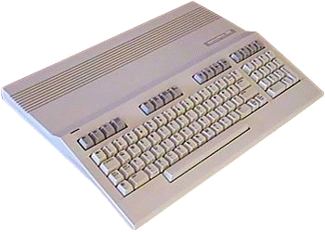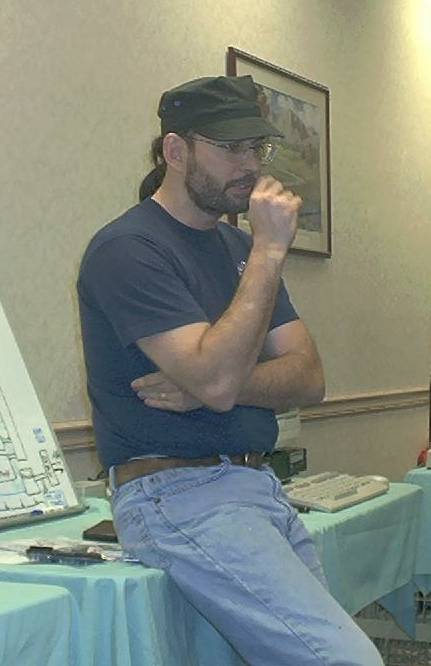Backstory
 The One and Only Commodore 128
The One and Only Commodore 128By late 1984 the need for Commodore Business Machines (CBM) to make a successor to the Commodore 64 was mounting. Following the absolute failure of the Commodore Plus/4 line, and the Commodore Amiga struggling in the midst of growing market competition as well as an anemic marketing campaign by Commodore the need for a new and more successful line of Commodore computers on par with the Commodore 64 (C64) was apparent. However things were quickly becoming more and more difficult for Commodore management to design and market a new computer. Firstly CBM was dealing with a management crises following the loss of the visionary, albeit controversial, Jack Tramiel and his ascension to the top position at Atari (CBM’s prime competitor following Apple and IBM). With that the new management lacked the vision and business experience that allowed Tramiel to make CBM the dominate force in the PC market. Couple this with increased market competition CBM was quickly loosing its market dominance in the personal computer market. Companies such as Apple, IBM, and Atari were quickly making a dent in CBM's foothold. As such financially CBM was not on the solid ground that it was accustomed to.
It was under these troubled circumstances that Commodore Business Machines decided to invest the money to design and market the Commodore 128 (C128). In doing so they had hoped to regain their foothold in the personal computer market and finally restore their dominance from back when the C64 had first debuted.
Design
 Bill Herd, the Mastermind Behind the C128.
Bill Herd, the Mastermind Behind the C128.The design of the C128 was the brainchild of computer engineer Bil Herd. A young and up and coming engineer Bil Herd had quickly ascended to the Lead Engineering position in Commodore for his vocal and vehement criticism of the Plus/4 management team. From the start Herd learned from the Plus/4 line’s greatest mistake and made full compatibility with C64 software a feature in the C128 from the start. As such it could play any cartridges intended for the C64 and could understand any code programmed in older versions of Commodore Basic.
One of the most important aspects of the C128’s design was the fact that it utilized multiple central processing units to allow for multiple applications. The C128 had two CPUs: a 2 MHz MOS 8502 processor and a 4 MHz Zilog Z80A processor. While the C128 had multiple processors this does not mean that it was a true multiprocessor as the C128 was unable to utilize both processors simultaneously. There was a reason for this. Lead engineer Herd used the MOS processor to run the C64 and C128 mode whereas the Zilog processor ran the CP/M mode. CP/M was a popular operating system specifically designed for business functions and applications. In the minds of Commodore’s management team by having business functions integrated into the C128 allowed for them to market the C128 as a versatile all purpose PC. In order to boot up this mode a user was required to insert a CP/M boot up disk. However a consequence of this design meant that the C128 was an expensive and complex computer to manufacture.
 The C128 Basic Start Up Screen
The C128 Basic Start Up ScreenAs for the specifications for the C128 it was an improvement across all boards in comparison to the C64. It had an MOS 8563 integrated circuit which had 16 colors and used an improved SIDs chip which was capable of 4 waves. It also had an impressive amount of RAM for a computer at the time. However getting to this point proved to be a difficult and costly experience for everyone involved in Commodore. The multiple processor design led to many issues that Bil Herd’s engineering team struggled to deal with. Many prototypes (even in the later design stage) had the catastrophic tendency to catch on fire or explode. Not only was that but the yield on their video cards was extremely low for their prototypes (as low .01%). Due to facing many processor bugs the production was delayed and expensive and the engineering team barely made CES 1985 reveal.
Marketing
 A Marketing Poster Directed at the Apple II
A Marketing Poster Directed at the Apple IIThe technical complexity of the C128 not only led to engineering issues but also marketing issues. The idea of a computer being a multi-functioning unit was still a new concept for the PC market as many consumers still owned or used specialized business computers for work and simple computers for home. Despite the versatility of the C128 CBM believed that marketing the C128 to the business computing market would be the most fruitful. However this deprived the C128 the mass appeal that allowed for the C64 to become the best selling computer in the mid eighties. By denying the C128 from becoming a gaming platform Commodore management also prevented it from being marketed as the “family” system that had really also allowed for the C64 to gain the mass appeal that made it the system seller and encouraged video game development for the computer. Also worth noting was that while it was present, the marketing campaign for the C128 was anemic and an all around weak effort by all accounts on the part of CBM management. Due to management not having the energetic driving force that Jack Tramiel provided during his time at the company the marketing was unable to really grab the attention of consumers like the C64 did.
Despite the fact that the C128 was an expensive computer to manufacture Commodore was fearful that if they were to price the C128 too high it would encroach on the Amiga’s high end personal computer market. As such the C128 was priced at $299.95 and the improved and updated 128D was priced at $499.95. This was despite the fact that it cost as much to manufacture as the Amiga 500 which was priced at $595.95. This meant that Commodore was marketing an under-priced graphical power-horse to businesses and families that didn’t need the multitasking or applications that the C128 had. It should be noted that the business computer market and family computer market were already inundated with cheap albeit more specialized varieties. As a result by being a mismarketed jack of all trades the C128 failed to appeal to any one market.
Software Support
As for video game developer support for the C128, it was a lack luster affair. Part of the reason for this was that the C128 was design specifically with the business market in mind and with the gaming scene as an afterthought. In total less than 50 games were released for the C128. In comparison to the C64 having over 10,000 commercial software titles published for it (over 2,000 which were video games), a significant failure for the C128. Similarly whereas the C64 and to a greater extent the Amiga where able to carve an active demo scene in the computer hobby world no such support would develop for the C128.
Market Reception
 The C128 Retail Package
The C128 Retail PackageIn total by the end of its production the C128 sold around four million units. While by no means a failure in comparison to the C64’s approximately 17,000,000 sold the C128’s market performance came as a disappointment to the management team at Commodore. As previously noted due to the C128’s low price Commodore Business Machines received a lower than usual profit per unit when C128s were initially being sold. Also worth noting is that the C128 was seen as the last computer that utilized CP/M. In less than a year after it was released CP/M use was being replaced by major businesses in favor of Microsoft DOS. As such Commodore’s hope that they would carve out a base in the business computer market completely failed.
Legacy
The disappointing performance of the C128 as well as the Amiga line struggling to maintain dominance marked the beginning of the end for Commodore Business Machines. While the company was once the manufacturer of the most popular line of personal computers in the United States and worldwide their management struggles and inability to deal with the changing personal computer market would market the death note for CBM. This machine would be Commodores' last 8-Bit computer; after this they would produce only 16/32 bit Amiga's and IBM PC clones. Five years following the discontinuation of the C128 line CBM would file for bankruptcy and sell the Amiga line to German PC manufacturer Escom.
Technical Specifications
| Processors | - MOS 8502 @ 2 MHz
- Zilog Z80 @ 4 MHz
|
| RAM | - 128 kB system RAM
- 2 kB 4-bit dedicated color RAM
- 16 or 64 kB dedicated video RAM
- up to 512 kB REU expansion RAM
|
| ROM | 72 kB |
| Graphics | - MOS 8564/8566 VIC-II E for 40-column composite video
- MOS 8563 VDC for 80-column digital RGBI component video
|
| Display | Text Mode: 80x25 or 80x50, 16 RGBI colors
Graphics Mode: 320x200, 640x200, or 640x400 (interlaced) |
| Sound | MOS 6581 SID synthesizer chip |
| Ports | Serial, video (composite), RF video (TV) |
Log in to comment